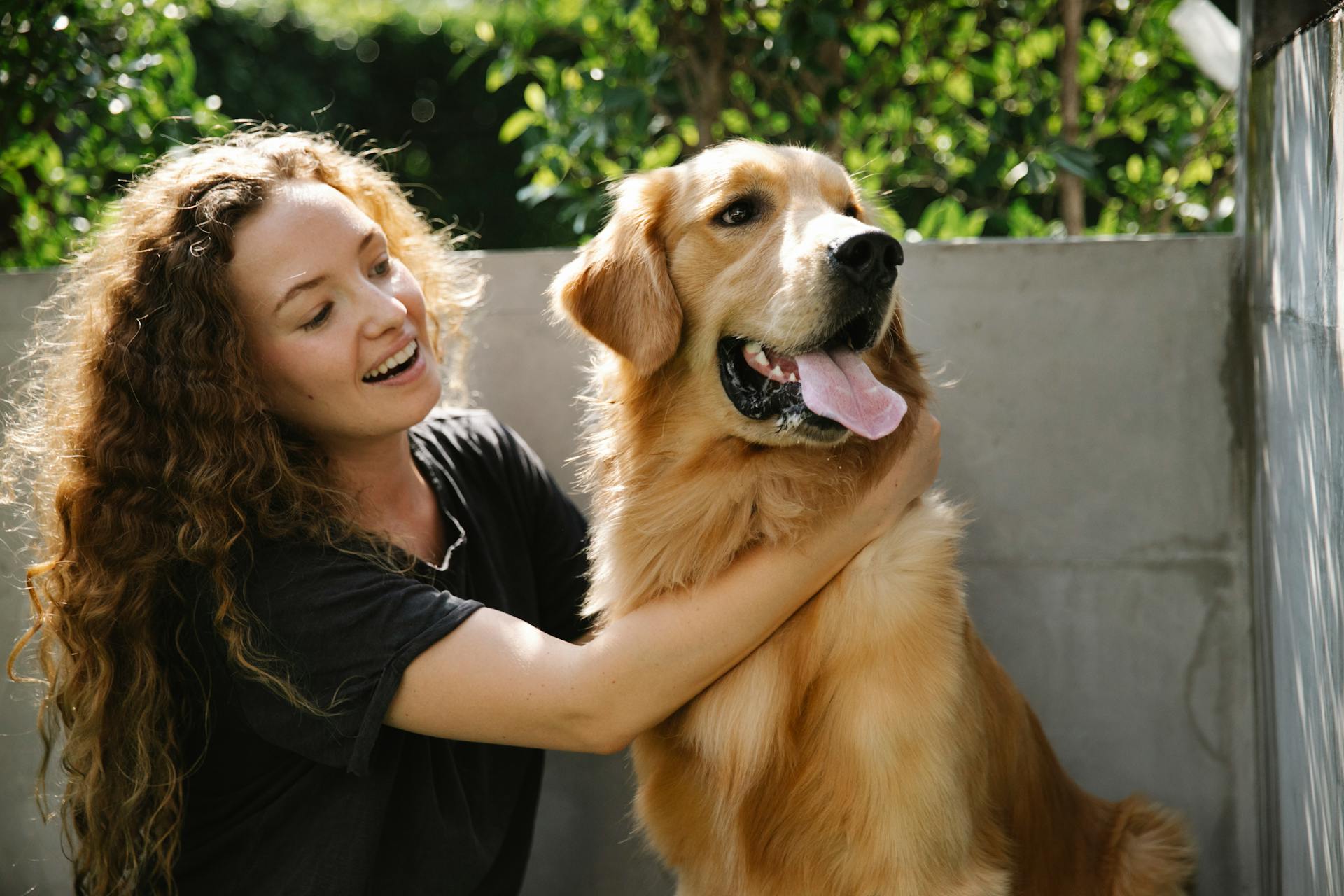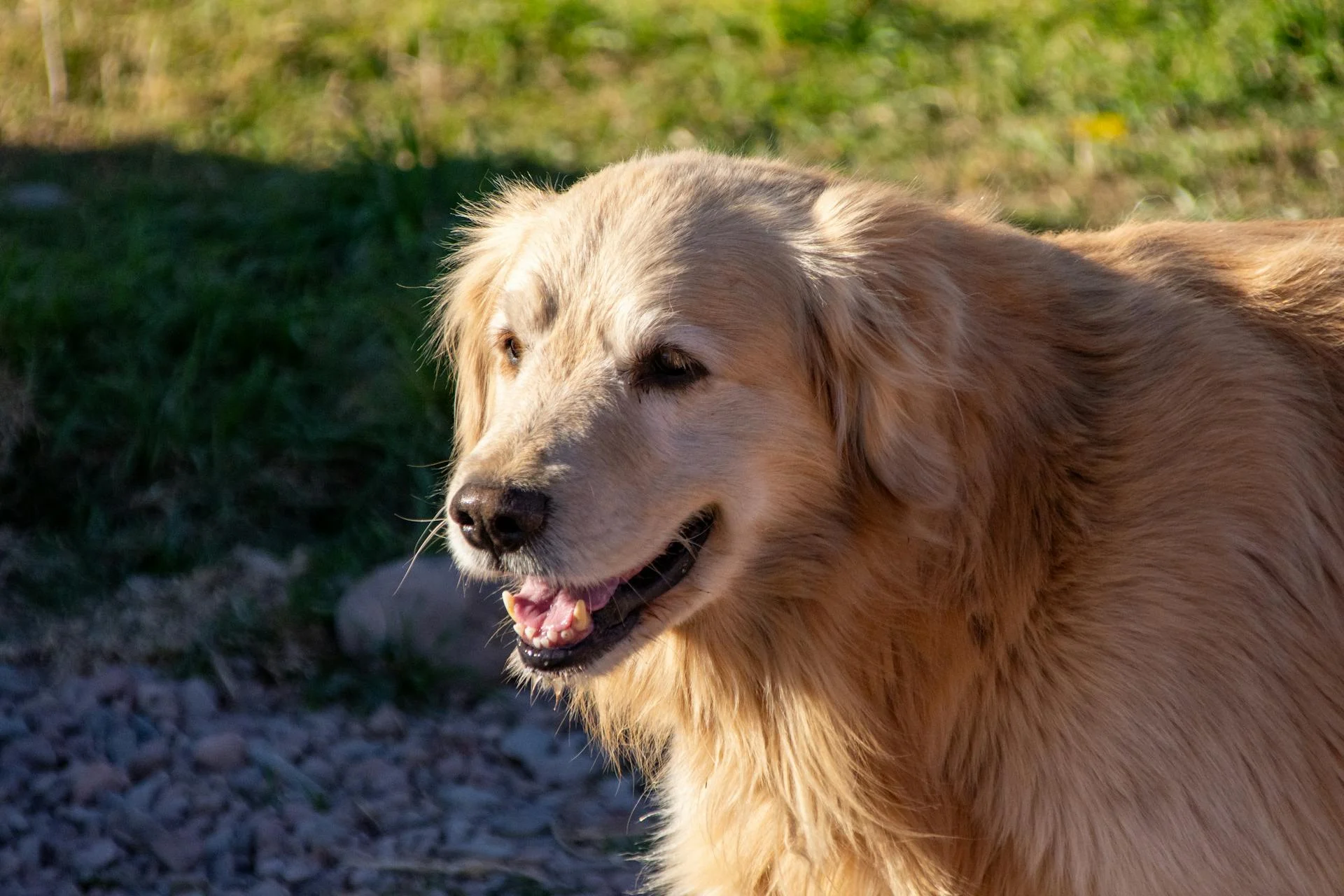
Choosing the right dog collar size for your Golden Retriever is crucial for their comfort and safety.
A well-fitting collar should be snug but not too tight, allowing for about two fingers to fit between the collar and your dog's neck.
Golden Retrievers typically grow to be around 20-24 inches tall and weigh between 55-75 pounds.
Selecting a collar that is too small can cause discomfort and potentially lead to skin irritation.
Measuring and Choosing the Right Size
Measuring your golden retriever's neck size accurately is crucial for selecting the perfect collar that ensures comfort and safety. To achieve the most precise measurement, start by preparing a soft tape measure or a piece of string to wrap around your dog's neck.
A soft tape measure is preferable, as it easily conforms to your dog's neck shape, providing a more accurate measurement. If you don't have a soft tape measure, you can use a piece of string and then measure the string's length with a ruler or regular tape measure.
See what others are reading: Should I Take My Dog's Collar off at Night?
Position your golden retriever standing up straight with their head in a natural position, ensuring an accurate measurement without any distortions caused by their posture. The collar should rest at the base of your dog's neck, right above its shoulders.
To wrap the measuring tape around the neck, hold the end of the tape measure or string at the base of your golden retriever's neck and wrap it around, ensuring it's snug but not too tight. You should be able to fit two fingers comfortably between the tape and your dog's neck.
Take the measurement where the tape measure or string meets the starting point, and add about two inches to your measurements for the right collar size. A too big of a collar is better than too small of a collar, as it can always be adjusted to be smaller.
Here's a quick reference guide to help you choose the right size:
Remember, a dog's age, sex, and breed can also affect their neck size, so consider these factors when choosing a collar.
Measuring Your Golden Retriever's Neck Size
Measuring your golden retriever's neck size is crucial for getting the right collar size. You'll need a soft tape measure or a piece of string to wrap around their neck.
A soft tape measure is preferable because it easily conforms to your dog's neck shape, providing a more accurate measurement. If you don't have a soft tape measure, you can use a piece of string and then measure the string's length with a ruler or regular tape measure.
To get an accurate measurement, ensure your golden retriever is standing up straight with their head in a natural position. This will help you get an accurate measurement without any distortions caused by their posture.
The collar should rest at the base of your dog's neck, right above its shoulders. Gently part their fur to find the spot where the neck meets the shoulders.
Wrap the measuring tape around the neck, holding the end at the base of your golden retriever's neck and ensuring it's snug but not too tight. You should be able to fit two fingers comfortably between the tape and your dog's neck.
To account for future growth, add about two inches to your measurements for the right collar size. This will ensure the collar stays comfortable as your golden retriever grows.
Here's a summary of the steps to measure your golden retriever's neck size:
- Wrap a soft tape measure or a piece of string around your dog's neck, ensuring it's snug but not too tight.
- Fit two fingers comfortably between the tape and your dog's neck.
- Add about two inches to your measurements for future growth.
By following these steps and considering your golden retriever's age and sex, you'll be able to find the perfect collar size for your furry friend.
Maintenance and Care
Maintenance and Care is crucial for your dog's safety and comfort. Regularly cleaning, inspecting, and replacing your dog's collar as needed will keep your furry friend secure and stylish.
To keep your dog's collar in top shape, measure their neck size accurately, and explore various collar styles and features. This will help you provide the perfect accessory that meets their needs and showcases their unique personality.
By taking the time to maintain and care for your dog's collar properly, you can ensure its longevity and effectiveness. Proper collar maintenance and care will also keep your furry companion comfortable and secure during walks and adventures together.
Maintaining Your

Proper collar maintenance and care are essential to ensure your dog's safety and comfort. Regularly cleaning and inspecting your dog's collar can help prevent dirt, bacteria, and other contaminants from building up and causing skin irritation.
Selecting the right collar for your dog is crucial for their comfort and safety. Measuring your dog's neck size accurately is key to finding a collar that fits properly.
To keep your dog's collar in top shape, it's essential to maintain and care for it properly. Cleaning and drying the collar regularly can help prevent damage and extend its lifespan.
Replacing your dog's collar as needed is crucial for their safety and comfort. A collar that's worn out or damaged can cause skin irritation and even lead to accidents.
Leash Training
Leash Training is an essential part of your dog's maintenance and care. It ensures a positive experience for both you and your dog during walks and other outdoor activities.
To start leash training, choose the perfect collar and accessories for your dog. This will make the process much smoother and more enjoyable for both of you.
Teaching your dog to wear a collar and leash comfortably requires patience and consistency. It's a process that needs to be done gradually and in a positive way.
Gradually introduce the collar and leash to your dog, starting with short periods of time. This will help them become accustomed to wearing the collar and leash without feeling overwhelmed.
With time and practice, your dog will learn to walk comfortably on a leash, and you'll be able to enjoy more enjoyable walks together.
Choosing Pet Bedding Types and Materials
Choosing the right pet bedding is crucial for your furry friend's comfort and overall well-being. Higher price points compared to traditional options can be a consideration for some pet owners.
Some pet beddings may require more frequent washing than others, which can be a drawback for busy pet owners.
Higher maintenance pet beddings may not be the best choice for pet owners who value convenience.
There are various pet bedding types and materials available, each with its own set of benefits and drawbacks.
Frequently Asked Questions
How do I know my dog's collar size?
To determine your dog's collar size, check the weight range that matches your dog's weight and refer to the corresponding collar length in our sizing chart. Use our chart to find the perfect collar size for your furry friend.
What size collar for a 17 inch dog?
For a 17 inch dog, consider ordering a large collar, as the measurement is close to the maximum size. Refer to the fit guide for more detailed sizing recommendations
Featured Images: pexels.com


